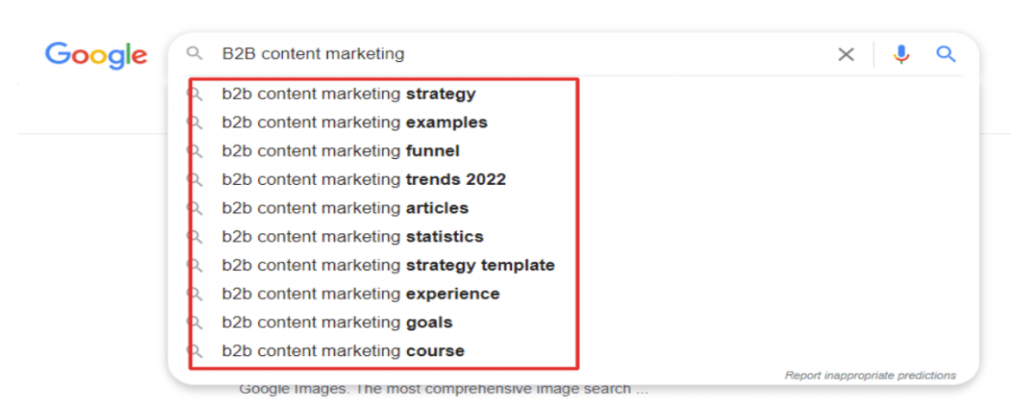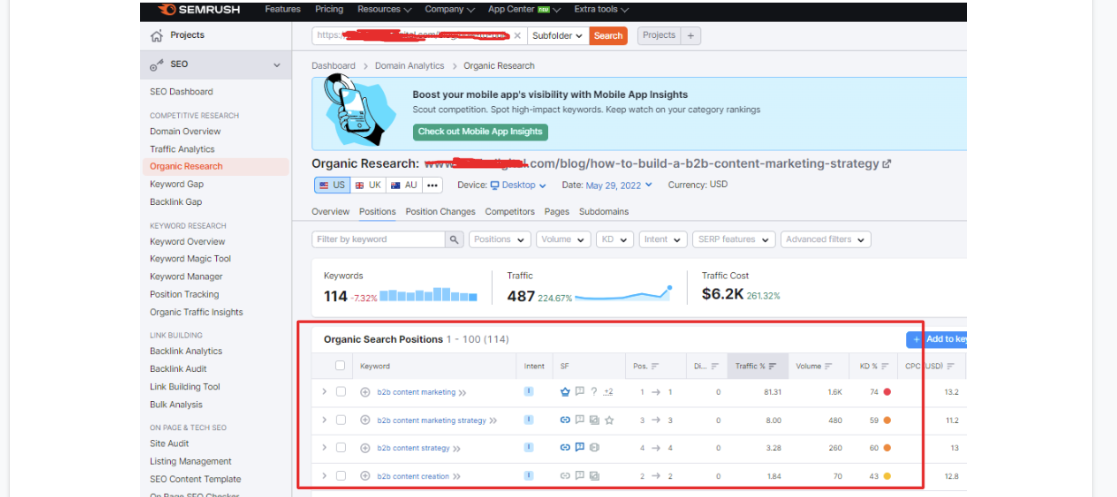7 Powerful Methods to Generate Unique B2B Content Ideas
Creating quality content is paramount for every B2B marketer to drive their business forward and gain audience trust. However, finding original and compelling content ideas can be challenging for marketers. At times marketers may feel they are running out of content ideas, or every topic they want to write about has already been covered or doesn’t coincide with their company’s overall content strategy. Adopting the right content ideation method or strategy is vital to avoid such a situation. A robust content ideation strategy can help you quickly develop exciting and unique content ideas. However, remember that there is no one-size-fits-all strategy for B2B content ideation. The content ideation methods or tactics should be driven by your business goals, such as brand awareness, user engagement, and organic traffic growth.
Outlined below are seven valuable content ideation tactics that you can implement to generate unique content ideas to drive traffic, audience engagement, and conversions:
1. Set up a robust customer feedback strategy for content inspiration
B2B content marketers often focus on questions, such as“what topic should we write on next” during content ideation and brainstorming sessions. However, this approach is often ineffective since it doesn’t consider the users who will consume the content. To provide real value, you should create content that addresses challenges and pain points encountered by most of your customers. Frequent interaction with clients via phone calls, emails, and in-person meetings can help you prepare customer-centric content. Regular client communication is also invaluable for finding fresh content ideas. It helps you to prepare content around never-discussed-before topics in your industry.
Here is a step-by-step explanation of how you can generate original B2B content ideas based on the insights obtained from customers:
- Determine and set up the ideal feedback mechanism for different clients, such as phone calls, emails, surveys, and in-person meetings.
- Compile and analyze customer responses obtained from various communication channels on a unified interface to detect any pattern of unique challenges or topics that you can write about.
- Share the customer feedback or response with team members during brainstorming sessions to generate unique content ideas that cover and address the most pressing client issues.
- Utilize tools like Trello, Asana, and Google Sheets for organizing, prioritizing, and implementing different content ideas.
2. Collaborate with customer-facing teams to gauge customer sentiments and create audience-centric content
Generating new content ideas based on client feedback is often not feasible for B2B marketers due to multiple reasons, such as clients’ disinterest and non-disclosure agreements. In such a case, you can reach out to sales, customer support, and other departments in your company that regularly interact with clients. Interviewing customer-facing teams will help you get rich, qualitative insights into your clients’ pain points and create useful content that helps solve those issues.
Outlined below are some interview questions that you can ask your sales development representatives:
- What are some common challenges that you hear from clients during sales calls?
- What type of product or services clients’ are most interested in?
- What type of sales material (product brochures, case studies, etc.) do you regularly send to clients?
- What type of content would be most helpful to send potential customers?
You can also join sales and product demo calls or request recordings for more in-depth insights into business issues and industry trends that your clients are most concerned about. Carefully note down every jargon or keyword that clients use to explain a particular problem during the call. This will help you create content assets that include those exact keywords while addressing customer issues.
Next, you can engage with customer service representatives for content ideation. Some of the questions that you can ask the customer service team include:
- What do clients find most valuable about our product/service?
- What are the common challenges customers encounter while using our product/service?
- What are some frequently asked questions by customers?
- What type of content would be most helpful for new clients?
Due to time constraints, keeping track of every customer service interaction is often not viable for marketers. In such a case, you can set up automatic email alerts from your customer service chatbot to know the most common client queries. This will help you develop new content for your different products or services, such as FAQ articles, how-to guides, and tutorial posts.
3. Keep up with industry trends to find original and compelling content ideas
Staying up to date with the industry trends is another effective tactic that marketers can apply for content inspiration. Keeping a close eye on current big events in your industry and creating thought-provoking content around them can help you gain significant audience attention. One of the best tools that provide insights into the buzzing industry topics is Google Trends. You can visit this tool’s homepage and enter the relevant keyword to find all the related topics creating a buzz in your industry. You can also apply filters, such as location and time range, to get more accurate results.

You can also use tools like BuzzSumo and Google Alerts to monitor industry trends and configure alerts for topics relevant to your business. Setting up email notifications will help you quickly respond to major industry events by posting articles about them.

Social listening is another powerful technique for monitoring industry trends, competitors, and overall brand sentiment. For instance, you can utilize social listening tools like Talkwalker to track the relevant hashtags, brand mentions, and social influencers. Being aware of hot topics helps you find new content ideas and positions you as an expert and credible source of industry information. Successful newsjacking also requires a proper content framework, so you can quickly roll out exclusive content related to a particular breakout topic before it becomes ubiquitous.
4. Embrace an SEO-first strategy to determine high-traffic content topics
Keyword research not only helps you improve the ranking of your website blogs but also discover unique content ideas. Start with identifying and building a list of keywords related to your topic. You can utilize Google’s auto suggest and the related search feature to identify the keywords that your target customers are searching online. For instance, you can input the term B2B content marketing in google’s search bar to identify all the keywords related to it by looking at the drop-down search suggestions. You can also check Google’s related search results to find relevant keywords.
If you aren’t sure which keywords to target, you can check out your competitors’ blogs and top performing pages using tools like Moz, Ahref, and Semrush. These tools will help you identify the keywords your competitors are ranking for and how competitive those keywords are.

After identifying your target set of keywords, input them into tools like Semrush for more in-depth information, such as keyword difficulty, monthly search volume, similar keywords, and popular questions related to your topic. Such detailed insights will help you create new articles with relevant keywords.

From an SEO perspective, assess the quality of top-ranking pages for your target set of keywords. Evaluate aspects like page authority, number of backlinks and keywords, content titles, and assumed search intent. Analyzing this information will help you assess whether you’ll be able to outrank the existing competitors for your chosen keyword.

For instance, the top five blog posts in Google search results for the target keyword “B2B content marketing” is mostly from well-established brands like Hubspot and Backlinko with high page authority and quality backlinks. Any new brand or website will face hard times ranking their blog post for this keyword. Therefore, new websites/companies should identify keywords with low competition and decent search volume to rank their blogs in search engine results. New brands can also build content clusters around niche topics to improve their brand authority and search engine rankings.
5. Track the questions posted by your target users on online communities for content inspiration
To source new B2B content ideas, you can join social media groups, forums, and online communities like Reddit and Quora, where most of your existing and potential customers are present. Joining such online communities will help you identify the most common challenges of your target customers and find new content ideas. You can enter a relevant keyword or topic on Reddit to find the popular questions or threads related to it. For instance, as a digital marketing agency, we looked for challenges/questions posted by users on Reddit related to B2B storytelling.

During our search on Reddit, we found one interesting question related to B2B storytelling. Now, this is an interesting and relevant topic for any marketing agency that provides B2B content marketing services. Some blog topics that you can create based on this question include:
- B2B Storytelling Survival Guide: Telling compelling stories that stick!
- How to generate product demand with B2B storytelling?
- The importance of B2B storytelling and how to do it right?
Out of these three topics, we have already created a blog on the first idea. We can also create an entire mini-blog or video series around this topic, covering aspects like B2B storytelling techniques, frameworks, benefits, and examples. Apart from Reddit, you can check questions and comments posted by users on different social media groups for content inspiration.
6. Leverage strategic partnerships to produce co-branded content
Besides improving brand authority, co-marketing can help you create original, high-quality content driven by two or more experts in your industry. Co-marketing, in simplest terms, refers to the strategic alliance between two or more brands to promote a shared product or service. Consider the example of the strategic partnership between Magento and its 13 different partner merchants, including Paypal and Stripe, for a creative co-marketing campaign called “Who Killed Mr. Profits?”. The multiple brands in this campaign cater to a similar audience – e-commerce merchants who want to deliver seamless online shopping experiences. Therefore, these brands partnered to create different types of co-branded content assets, such as ebooks, infographics, and social media posts, that educate retailers about various profit-killing features on their e-commerce sites and how to prevent them in an entertaining yet informative manner. This co-marketing campaign became hugely successful courtesy of its innovative concept and helped Magento and its partners reach a wider audience while boosting their bottom line.
Co-marketing also allows you to create more valuable and refreshing content for your readers by adding an expert voice or input. However, having similar goals is vital for creating high-quality co-branded content that resonates with audiences of both brands. To ensure this, prefer a co-branding partner whose brand values, mission, and target audience are similar to your brand. In addition, your chosen partner should be reputed, credible, and trustworthy. HubSpot, for example, primarily works with well-known B2B brands to publish top-quality co-branded content in the form of blogs, ebooks, webinars, and videos.
7. Attend online webinars/industry events to find in-demand content topics
Joining webinars and online events hosted by various experts in your industry is an excellent technique for finding original content ideas. The presenters organize various pre-surveys and interactive pools during such knowledge-sharing sessions and encourage the audience to ask questions, which can be a source of content inspiration. Listening carefully to questions asked by the audience during such sessions can provide you with quality insights into your target customers’ challenges. In addition, joining such online events enables you to create takeaway or roundup posts containing valuable quotes from keynote speakers.

For example, the above mindmap is designed based on the responses submitted by various users in a pre-questionnaire form of one of the knowledge-sharing sessions organized in our organization. The title of the online learning session – “LinkedIn Ads for Lead Generation” – is divided into various sub-topics based on the user responses. Creating content around these topics will help us generate considerable traffic since these ideas are sourced directly from the users. We can easily create a mini-blog series for more in-depth insights into each sub-topic.
Conclusion
Generating fresh content ideas is undoubtedly one of the biggest challenges that B2B marketers face today. It can be even more difficult if you serve clients across different industries because your predetermined content ideation methods won‘t apply to every sector. Therefore, it is better to adopt a flexible content ideation approach depending on your business goals. You can test and implement multiple content ideation tactics to determine what works best for your business. From interacting with your customer-facing teams to newsjacking to keyword research, there are plenty of valuable tactics that you can apply to find new content ideas. Above all, you should emphasize customer needs when planning for your next piece of content.
If you need more assistance on how to come up with original content ideas that resonate with your target audience, feel free to reach out to our content marketing experts today.

